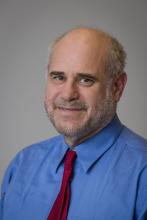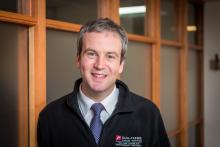Crowdsourcing is now happening at multiple steps in cancer research, from linking patients with studies to data collection, to an end game that offers the data to anyone interested in taking a crack at analyzing it, drawing conclusions, or generating hypotheses for further study. Generally defined today as electronic-based communication that links otherwise disparate individuals or groups, crowdsourcing has quietly over the past decade or so begun to transform a significant segment of all types of biomedical research, with effects on oncology that seemingly are among the strongest.
Crowdsourcing data analysis “is an opportunity to take on complex problems in cancer research and attract researchers who would not usually work on it. With the complexity of cancer we need to tap into every resource; this is a way to do it with low overhead,” explained Daniel Gallahan, PhD, deputy director of the Division of Cancer Biology of the National Cancer Institute. “It’s been a workable model that we’ve had success with, and there is not a lot of upfront cost,” Dr. Gallahan said in an interview.
“A lot of data is produced in oncology, and the ability of an individual to analyze the data is fairly limited, but if we can focus a community of people around a specific question, we can answer it much more quickly,” explained James C. Costello, PhD, a bioinformatics researcher at the University of Colorado in Aurora.
Traced to first usage in 2006, the term crowdsourcing as it applies to data analysis means combining “the bottom-up creative intelligence of a community that volunteers solutions with the top-down management of an organization that poses the problem,” according to a 2016 review (Nat Rev Genet. 2016 July 15;17[8]:470-86). The bioinformatics experts who wrote this review, as well as most anyone else who saw the way crowdsourcing has taken hold over the last decade, link this increased role to the huge amounts of data generated by and needing analysis in biomedical research in general – and in oncology in particular. Companies like Sage Bionetworks have came on the scene built to expedite crowdsourced data analysis.
Dr. Gallahan cited as examples of crowdsourced cancer studies a pair of DREAM (Dialogue for Reverse Engineering Assessments and Methods) challenges, one for developing an improved algorithm for predicting drug sensitivity in breast cancer cells (Nat Biotechnol. 2014 Dec;32[12]:1202-12) and a second that developed a better prognostic model for patients with metastatic, castration-resistant prostate cancer (Lancet Oncol. 2017 Jan;18[1]:132-42). The National Cancer Institute “has been actively involved in DREAM challenges,” he noted.
In addition to competing research teams working individually to find the best solution to these problems, the prostate cancer challenge, for example, then “asked the best performing teams to work together to further improve the methodology,” said Dr. Costello, who helped organize and run both the breast cancer and prostate cancer challenges cited by Dr. Gallahan. “The challenge phase was separate, but then [the teams] worked together to come up with even better solutions. We put together the best of seven models, and none of the teams had ever worked together before,” explained Dr. Costello, (JCO Clin Cancer Inform. 2017 Aug 4. doi: 10.1200/CCI.17.00018). He called this opportunity another attraction of a crowdsourced challenge for problem solving.
Crowdsourced data analysis is also vulnerable to several possible problems. It potentially can “lose specificity and the hypothesis-driven aspect,” cautioned Dr. Costello. “There are also issues of who owns the data and who receives credit” for a solution based on the data, and there are inherent limitations in finding associations that are independent of a study’s original primary endpoint. “It’s a different approach that does not replace the traditional, standard research approach of hypothesis-driven studies,” he said.
Other caveats on the output of DREAM challenges and other crowdsourced data analysis are the need for validation of the solution and a way to follow up on a solution to take it from an academic exercise to a useful application, said Dr. Gallahan.
Despite their limitations crowdsourced analyses began appearing a little more than a decade ago and have steadily grown in number “as more and more data get generated,” more than can be easily analyzed by the people collecting the data, Dr. Gallahan noted.
In fact, some studies now accumulate data with the express intent of posting the findings online and making them available for crowdsourced analyses. The Count Me In study is a collaboration of researchers at Dana-Farber Cancer Institute in Boston and three other organizations to engage and collect data from patients with a wide range of cancer types. The study began enrolling patients with metastatic breast cancer, with about 5,100 of these patients included by early 2019 in the Metastatic Breast Cancer Project. Count Me In has expanded to also include patients with prostate cancer, angiosarcoma, and gastroesophageal cancer. The program’s overall goal is to enroll more than 100,000 patients diagnosed with any type of cancer.
“The concept is using online recruitment to involve patients who wouldn’t otherwise engage” with this sort of study, said Eliezer van Allen, MD, a Dana-Farber oncologist who runs the prostate cancer arm of Count Me In. “Patients are the ones who spread the word” about Count Me In to other patients, largely through social media, an approach representing another way that crowdsourcing has seeped into cancer research.
“There was an inflection point in about 2013-2015” when a critical mass of patients with cancers interacted with other cancer patients in various social media and other online groups sufficient to make Count Me In viable, Dr. van Allen said in an interview.
Once data come in – from donated specimens that underwent genetic analysis, blood work, and clinical records – the researchers formated the information and then put it out with open access at the cBioPortal. Among the research questions that Dr. van Allen looks forward to getting addressed with these data are what factors define exceptional treatment responders, what are the genetic profiles of metastatic tumors, and what are characteristics of patients not treated at academic medical centers.



